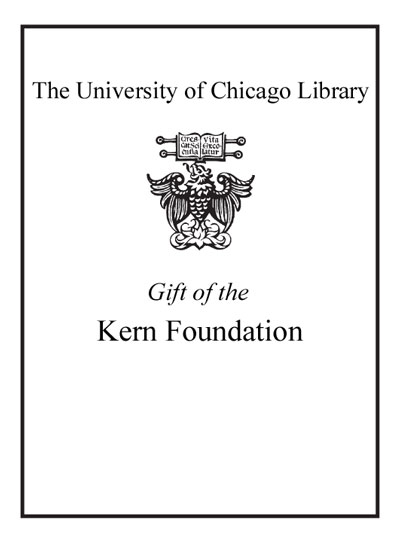The art of mystical narrative : a poetics of the Zohar /
Saved in:
| Author / Creator: | Fishbane, Eitan P., 1975- author. |
|---|---|
| Imprint: | New York, NY : Oxford University Press, [2018] |
| Description: | xiii, 520 pages ; 25 cm |
| Language: | English |
| Subject: | |
| Format: | Print Book |
| URL for this record: | http://pi.lib.uchicago.edu/1001/cat/bib/11753311 |
Table of Contents:
- Introduction
- 1. The Zohar as Classic
- 2. Literary Approaches to the Zohar
- 3. Mysticism and Literature in Comparative Perspective
- 4. Fiction as History: The Collapse of Time in Zoharic Narration
- 5. The Diasporic Gaze: Imagining the Holy Land from Afar
- 6. Comparative and Historical Context
- 7. The Literary Approach in Light of Evolving Theories of Authorship and Redaction
- 8. Structure of the Book
- 1. Voice, Gesture, and Drama
- 7. Performance and Theatricality
- 2. The Dramatization of Reverence and the Rhetoric of Lament
- 3. Gratitude, Celebration, and Dramatic Response
- 4. The Anxiety of Disclosure: Monologue and Gesture
- 5. Performative Gesture and Dramatic Monologue: The Phenomenon of Weeping in Zoharic Narrative
- 6. Prostration
- 7. Raising and Laying on of Hands
- 8. Sitting and Standing
- 2. Encounters along the Way
- 1. The Poetics of Recognition
- 2. Encounters with the Natural World
- 2.1. Shooting Stars and the Light of Dawn
- 2.2. The Sheltering Tree
- 2.3. The Scent of the Rose
- 3. The Play of Borders and Genre: Between Exegesis and Fiction
- 1. The Episodic Narrative Form
- 2. The Epic Tale and the Craft of Exegesis
- 3. A Quest for Shekhinah
- 4. Structural Flow
- 5. In the Mountains of Ararat
- 6. The Rhetoric of Light
- 4. Magical Realism and the Fantastic
- 1. Representation and the Boundaries of Realism
- 2. Descent to the Cave of Fragrance and Visions
- 3. Magical Roses, Otherworldly Portals, and the Eagle-Man Spirit-Guide
- 4. Speaking with the Birds
- 5. Communication with the Dead
- 6. The Master of Magical Herbs
- 7. Heavenly Fire and the Braying Donkey
- 5. Narrative Ethics
- 1. Prelude; Aesthetic and Philosophical Considerations
- 2. Forgiveness
- 3. Poverty, Charity, and Compassion
- 4. Hospitality
- 5. Anger and Its Control
- 6. The Zoharic Frame-tale in Context: Correlations and Implications
- 1. Locating she Zohar in Medieval Iberian Literature
- 2. Avraham Ibn 'Ezra (1089-1164), Hai ben Mciqiz
- 3. Yosef Ibn Zabarah (c. 1140-c. 1200), Sefer Sha'ashu'im
- 4. Yehudah Al Harizi (c. 1166-1235), The Tahkemoni
- 5. Eliyahu ha-Kohein, Megillat ha-'Ofer (1277)
- 6. Yizhaq Ibn Sahulah (b. 1244), Meshal ha-Qadmoni
- 6.1. Opening Remarks
- 6.2. "They Contain a Wondrous Secret"
- 6.3. Ha-Havurah: "The Sturdy Vine of Fellowship"
- 7. The Christian Literary Context: Correlations And Comparisons
- 7.1. Opening Remarks
- 7.2. Juan Ruiz, Libra de Buen Amor
- 7.3. Alfonso X, The Cantigas de Santa Maria
- Conclusions
- Bibliography of Works Cited
- Subject Index
- Sources Index

